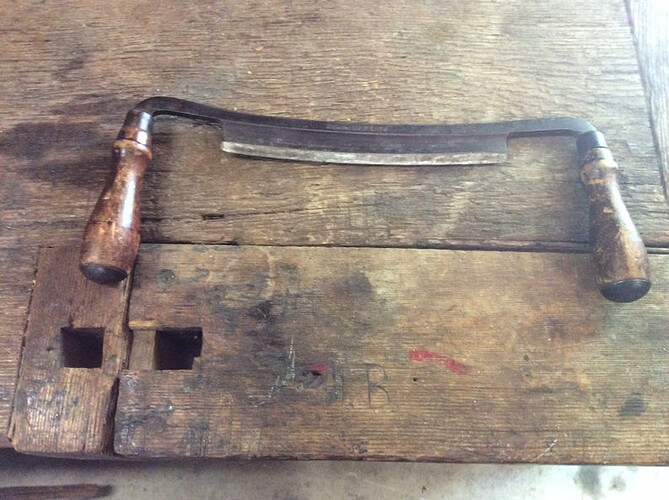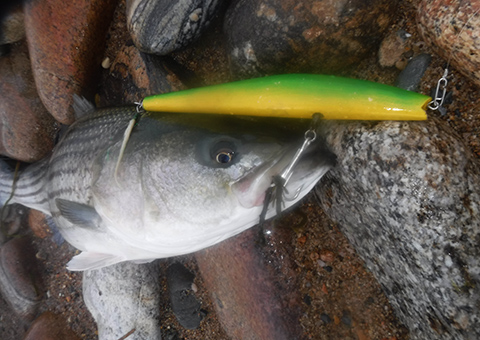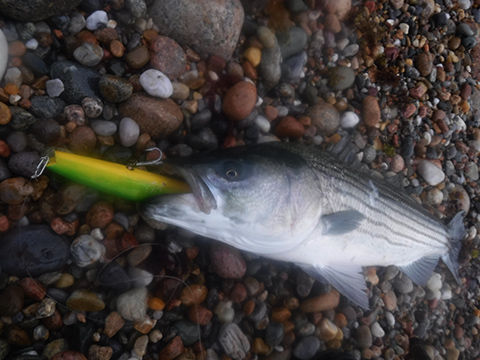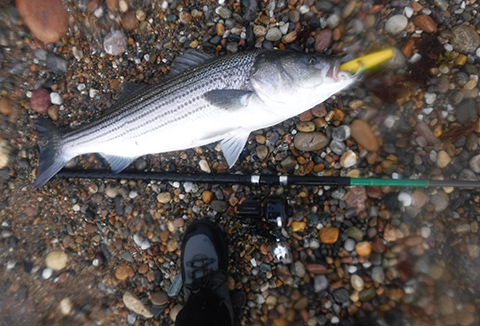This season I decided to try my hand at carving plugs. The plugs I made are 10.5 inches and almost 6 oz. Beasts!!!
Most plugs that other anglers build for the salt are turned on a lathe. I have decided to skip the powertools for everything but roughing in the blanks.
I am just using a drawknife and a spoke shave. The drawknife in this pic is a contemporary knife, but over the last couple months I started using vintage knives. Most were forged in the early 1900s.
vintage drawknife
I dont own a lathe…nor any fancy equipment. I do own a tablesaw, a miter saw, and a router but anyone with a hand saw, a chisel and a hand drill can accomplish the same. Hand tools are a 100% feasible option.
I bought a cheap draw knife and spokeshave online. The spokeshave needed a lot of tuning to get to be operational. Flattening and sharpening the blade and all surfaces. You can just do a search online for how to do this, or just buy a nicer spokeshave. The draw knife is a 5” flexcut drawblade. There are reviews that are negative about this knife…but they are folk who are using it to strip bark off of logs and complain that the handles pulled off. I am not using this knife for that, there are no knots in the wood I am carving. It is an unbelievable tool…and plenty strong enough.
Did a little research on approach. The process of making a lure is not much different than making a spoon. Exact same steps. This guy cranks a spoon out of a blank in 30 minutes. The video is sped up but you can see how effective hand tools can be. I would say my shaping probably only takes 15 minutes tops once I have the form roughed in using the saw.
I used boxstore 1x2 poplar.
I ran one of the halves through the table saw to get the channel for the thru wire.
Then I glued up the halves and shaped them in the table saw.
Then after shaping the profile curve with a drawblade I put on a coat of shellac
Which made it a bit easier to track how much material I was removing and symmetry.
If the stripes are symmetrical then so is the plug. It also helps control where you want the apex of the curvature. This is an idea I got from a blade sharpening tutorial where you ink the blade you want to sharpen and remove all the material until the ink is gone. In that way high and low spots are visible. Essentially a guide to contour.
These were modeled after a regular finnish swimmer form. These are just supersized versions. I figured that if I were going to do a handcarve, it would make sense to make something that is not a lathe form and not something I could buy.
Spar varnished sealed. A friend of mine uses a 60/40 spar/mineral mix.
I could not reach the beach the beach to test these because they were all closed due to the covid 19 crisis. So, when I test swam the above plugs I did so in the brackish water of a river. I did not catch anything but an osprey did dive and attack the plug and tried to carry it off. If a bird of prey was fooled, I figured that was a pretty good vote of confidence that I was on to something.
The osprey was right.! On my first focused outing, fishing my plugs, I caught fish to about 30# on them.




